My guide skied with me on his back so I could be rescued
- Published

Angie being carried by Stef Mours as he skied her towards a rescue location
After BBC journalist Angie Brown suffered a horrific knee injury skiing in a remote part of the French Alps, her guide helped get her to safety by carrying her on his back then dragging her across the snow.
The North Face couloir in the French Alps is so steep that the first time I looked over the edge my knees were visibly knocking together.
My body was shaking uncontrollably as terror took over me. A lifetime of ski skills left me and my mind went blank.
But it had taken about four hours of skiing to reach this remote gully, and there was no going back.
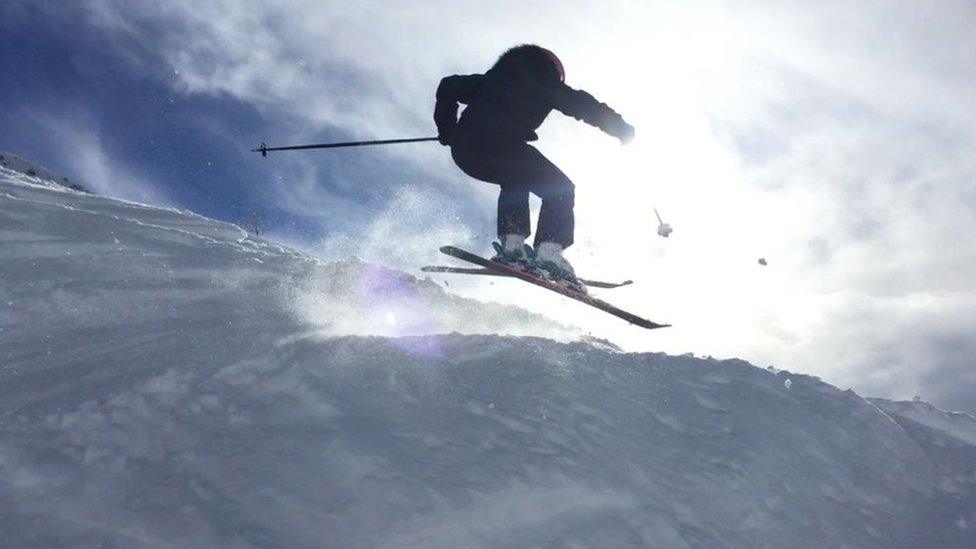
Angie was a regular skier before the accident
This was off-piste skiing at its most extreme. One wrong move and we would be hurtling down a rocky outcrop towards certain death.
So I put all my trust in my guide and we picked our way down almost vertical crevasses hemmed in by sheer cliff walls.
The day we had picked to ski the North Face in January 2019 had arrived with a -20C icy blast. From the group of 20 on our holiday, seven of us were up for the challenge and we left in good spirits.
When I arrived at the couloir I decided I was going to really go for it because if you attack the slope you are less likely to fall.
This is definitely true for a groomed piste where the snow has been flattened by a machine, but it had been snowing hard for weeks and this was deep powder.
I went for it anyway.
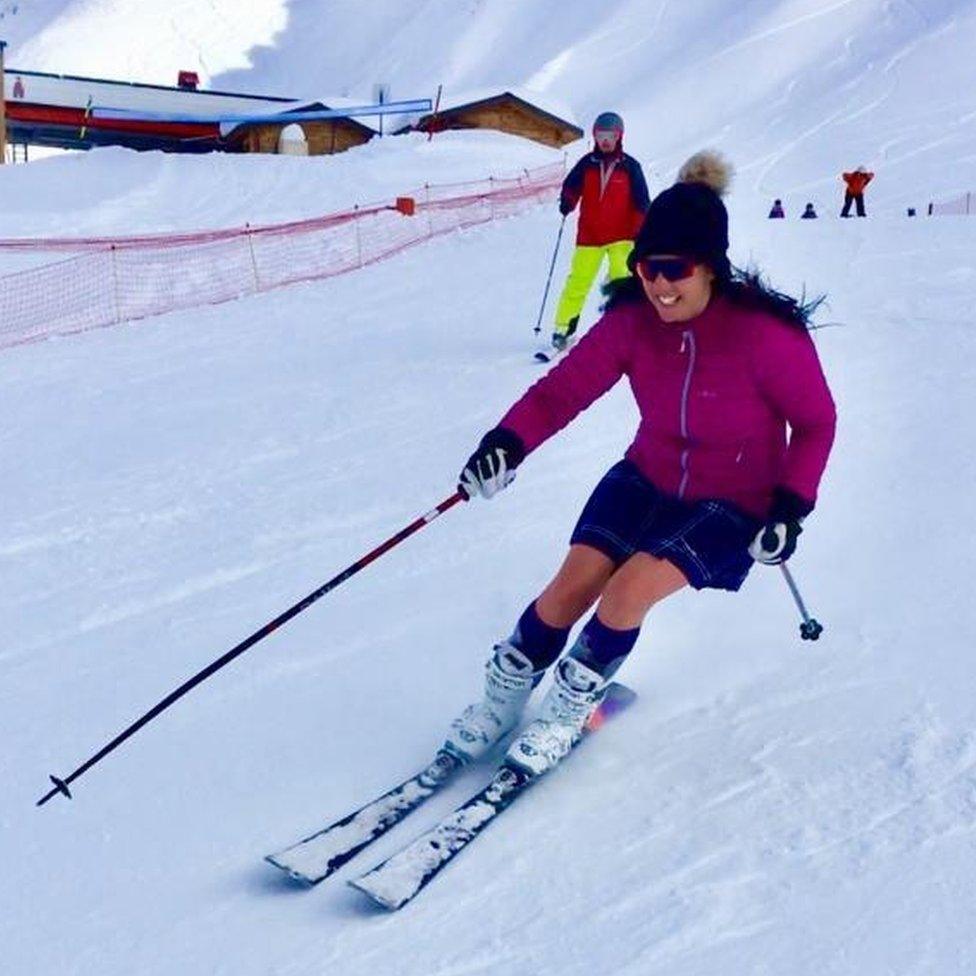
Angie has made it a tradition to ski in her kilt on Burns Day every year in the Alps
My friends said at first I looked really good - charging down the slope and cutting short, sharp turns in the snow.
I remember feeling really pleased with myself as I got faster and faster and the snow got deeper and deeper. I hadn't skied with such confidence in deep powder on such a steep slope before, and it felt great.
It takes a couple of hours to ski to the bottom, so you do it in sections.
The section I was on was steep, and all of a sudden there was so much snow built up against my ski as I turned that with the speed it forced my leg to snap around at the knee.
I lay face down in the snow while our guide, Stef Mours, shouted up to me to ask if I was all right.
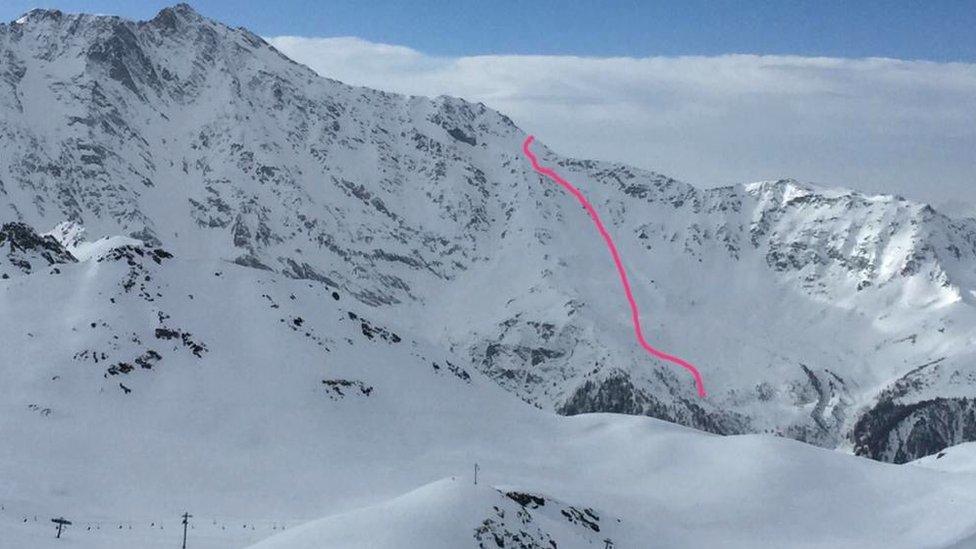
The skiing route down the North Face couloir in the French Alps
There was no pain at first, and strangely I didn't call out or respond to Stef. I just lay there face down, knowing something was very wrong with my leg.
Stef took his skis off and climbed back up to me. He lifted me up with the help of a friend to see if I could stand on my leg - but that was when we saw it would not hold up. It was falling inwards at the knee.
Stef immediately called for a helicopter, but realised that it would not be able to land at our location.
So he told me I would have to get on his back so he could ski me to a ledge.
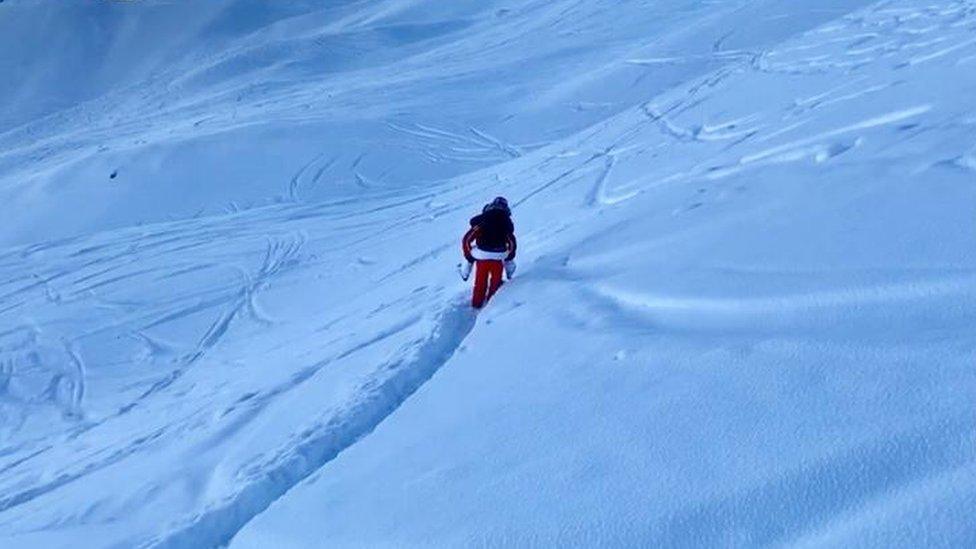
I was the same size as him, and I could feel his chest heaving with the exertion as he used every bit of his strength.
It was terrifying being on his back as he skied through thick snow, my injured leg hanging exposed to more injury if we fell again.
I kept saying I would find another way to get down to the ledge - but he knew there was no other option.
Eventually, he lay me down on my back in the snow. He turned me around so I was facing backwards down the slope, then started to pull me by the arms.
Snow was going down inside my jacket, and because we were in the shade the temperature was even colder.
The freezing temperature was unbearable. I felt scared and panicky.
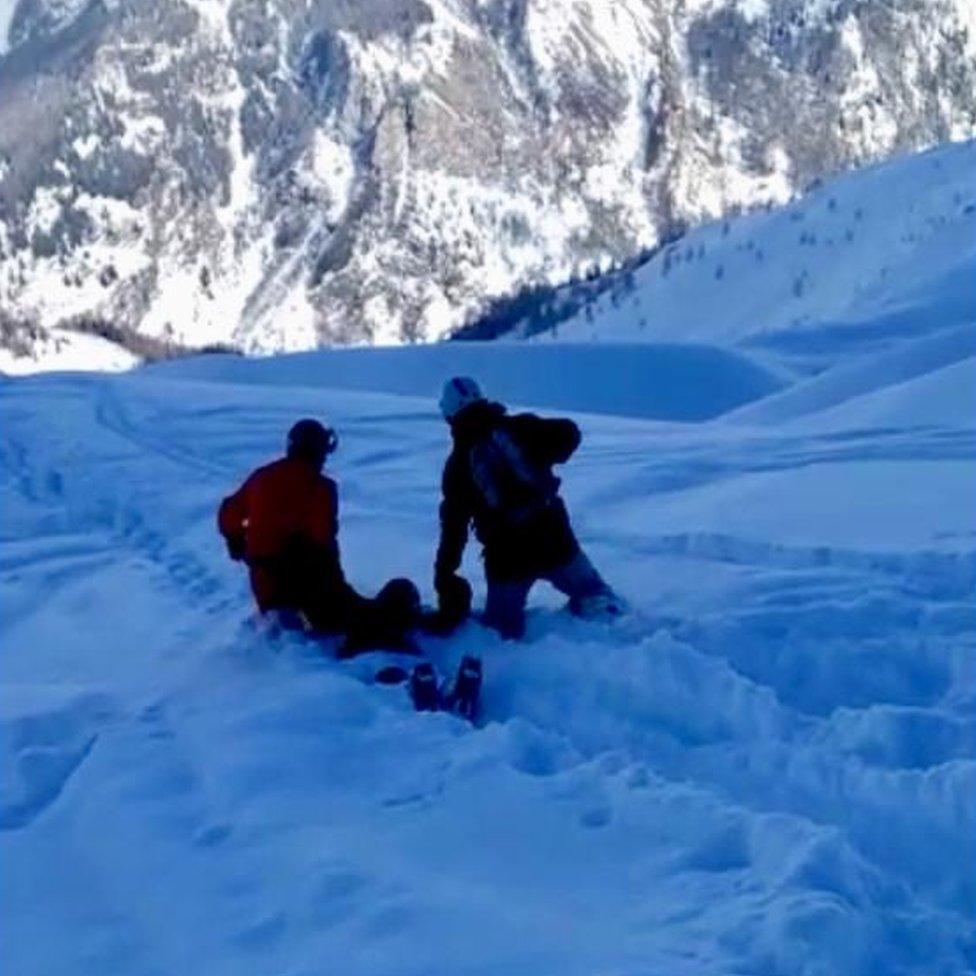
One of Angie's friends helped Stef drag her through the snow
Stef dragged me for about an hour. He would not stop, even though the snow was almost waist-deep, and put everything he had into getting me to that ledge.
When Stef received a call to say the military helicopter had been called to another emergency and we would have to wait for another hour, I felt desperate.
Lying in thick snow 9,000ft (3,000m) up a mountain in the shade, with the added wind chill factor, meant that the cold had become worse than the injury itself. I actually thought I might die.
Stef took off his jacket and put me in it, but I was still shaking and convulsing uncontrollably.

A helicopter arrived to airlift Angie to hospital
The cold that I felt was like nothing I had ever experienced and is still with me now.
But Stef didn't stop. He ran around to flatten the snow so the helicopter could land.
When the helicopter arrived, two Army guys jumped out and battled towards me before carrying me back to the aircraft.
That was when I allowed myself a rare cry. I knew I had been saved, but I felt so, so horrible and so, so cold.
And I felt achingly cold for hours in the hospital, despite being covered in blankets.
But once the trauma of the accident subsided, the full magnitude of what Stef had done for me hit home - and I felt an overwhelming gratitude to him.

Angie suffered severe injuries to her knee, including severing her medial collateral ligament
A few days later, a crane had to be used to lift me and my wheelchair into a plane for the journey back to Edinburgh.
An MRI scan showed that my medial collateral ligament had been snapped off with such force that it took a piece of bone with it. Another ligament holding the kneecap was ripped and the cartilage was all smashed up.
It took eight months, with two physiotherapists, before I was able to walk - but now, 15 months later, I'm able to run again.
And even though I think my knee will always be weaker than it was before, I'm starting to hear the call of the Alps once again...
Angie's rescue can be seen in Close Calls: On Camera with Nick Knowles on BBC One at 11.45 and on BBC One Scotland at 12:00 noon on Thursday, and on the iPlayer.